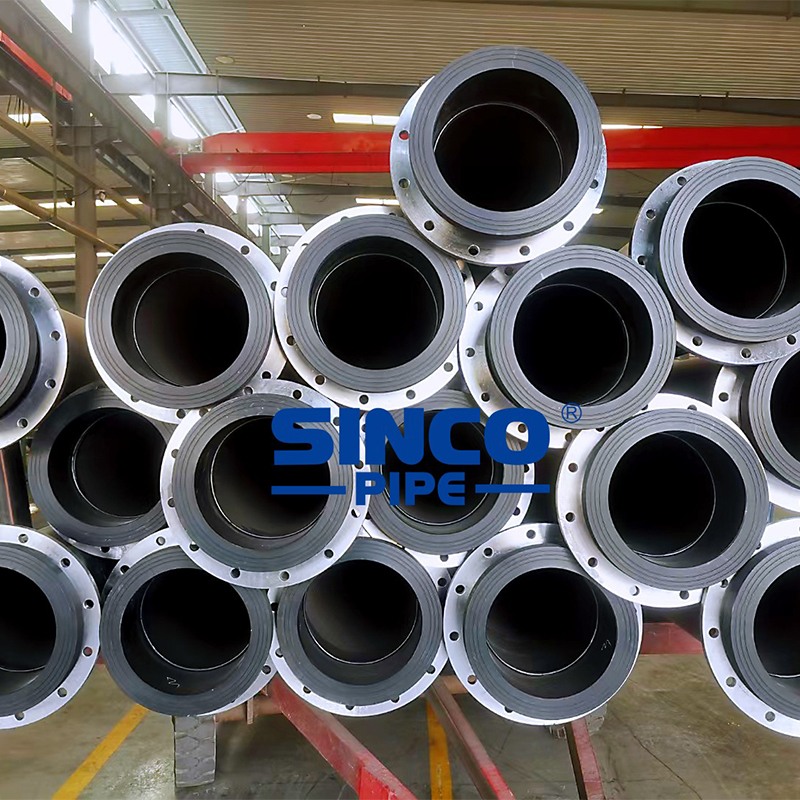Dredge pipes play a vital role in the field of dredging, enabling the efficient and effective transport of sediment, slurry, or debris during dredging operations. These specialized pipes are designed to withstand the demanding conditions encountered in marine, coastal, and inland dredging projects. In this article, we will explore the various applications and benefits of dredge pipes, understanding their essential role in facilitating sediment transport and optimizing dredging operations.
Sediment Transport: The primary purpose of dredge pipes is to transport sediment, which includes soil, sand, mud, or other materials, from one location to another. Dredging is often necessary to maintain or create navigable waterways, remove sediment buildup, restore coastal areas, or extract valuable minerals. Dredge pipes enable the efficient and controlled movement of sediment, ensuring it is transported to the desired disposal or placement site.
Dredging Operations: Dredge pipes are integral components of hydraulic dredging systems, which involve excavating sediment from underwater areas using hydraulic forces. Dredgers, equipped with powerful pumps, suction the sediment and transport it through the dredge pipes. These pipes facilitate the suction and discharge of the dredged material, ensuring smooth and continuous flow from the dredging site to designated locations. Dredge pipes are essential for maintaining the productivity and effectiveness of the dredging process.

Construction and Coastal Projects: Dredge pipes play a crucial role in various construction and coastal projects. In harbor and port construction, dredge pipes are used to remove sediment, deepen channels, and create berthing areas to accommodate large vessels. For beach nourishment projects, dredge pipes transport sand and sediment from offshore or nearby areas to replenish eroded beaches, providing protection against coastal erosion and storm damage. Dredge pipes also support the creation or expansion of artificial islands and land reclamation projects.
Environmental Restoration: Dredge pipes contribute to environmental restoration efforts by assisting in the cleanup and rehabilitation of aquatic ecosystems. In contaminated water bodies, such as industrial or mining sites, dredge pipes are utilized to remove and transport sediment containing pollutants or contaminants. The extracted sediment can then be treated or disposed of appropriately, aiding in the restoration of water quality and ecological balance.
Mining and Extraction: Dredge pipes play a significant role in the mining industry, particularly in the extraction of valuable minerals or resources from underwater deposits. These pipes enable the transport of mineral-rich sediment, such as gold, diamond-bearing gravel, or tin-bearing sands, from the mining site to processing facilities or storage areas. Dredge pipes support the mining industry's efforts to efficiently extract resources while minimizing environmental impact.
Aquaculture and Water Management: Dredge pipes are utilized in aquaculture and water management activities. In fish farming, they are employed to remove excess sediment, waste, or debris from fish ponds or aquaculture facilities. Additionally, dredge pipes aid in the maintenance and management of irrigation canals, drainage systems, and reservoirs, ensuring proper water flow and sediment control.
Conclusion:
Dredge pipes are indispensable components in the field of dredging, facilitating the transport of sediment, slurry, or debris during dredging operations. These pipes are essential for maintaining navigable waterways, coastal protection, environmental restoration, mining, aquaculture, and water management activities. By selecting the appropriate dredge pipe design, size, and material, professionals in the dredging industry can ensure efficient sediment transport, optimized dredging operations, and sustainable management of water resources. Dredge hoses play a crucial role in maintaining and improving water infrastructure and supporting various industries that rely on the effective management of sediment and underwater materials.



Comments
Please Join Us to post.
0